When you think about Japan, most people picture sashimi, Godzilla, anime, or the latest Shogun TV series (anyone?). Recently, I finally made my long-awaited dream trip to Japan. Only, I never imagined that my first visit would see me travelling into the heart of the Hokuriku Region, a hidden gem along the northwestern coast of Honshu.
Table of Contents
- Day 1: Fukui Prefecture: AFLARE → Bachu Gofukuten → Awara Onsen Ashiyu → Darumaya → Asano Kogetsudo Confectionery Shop → Sentopia Arawa → Seifuso
- Day 2: Ishikawa Prefecture: Omicho Market → Sake Shop Fukumitsuya Kanazawa → Hashitate Fishing Port → Sushi Waka
- Day 3: Ishikawa/Toyama Prefecture: Itaya Honten → Teraoka Fuusha Kanazawa → The Murakami Residence → Johana Hikiyama Festival Floats Museum → Matsui Silk Weaving
- Day 4: Toyama Prefecture: Takaoka Mikurumayama Museum → Ariso Dome and Suwa Shrine (Tatemon Festival)
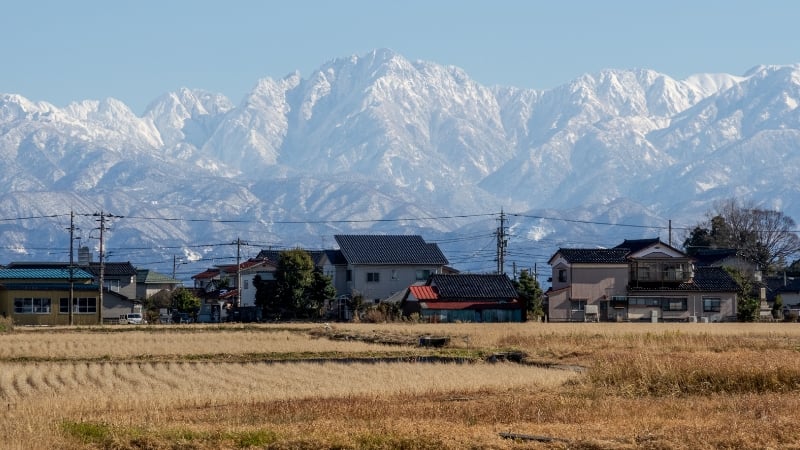
Image credit: Y.Kanao | Flickr
From rejuvenating hot springs to exquisite local cuisine and exuberant festivals, the rocky west coast in the Land of the Rising Sun is where the mountains meet the sea, and the result is something to behold.
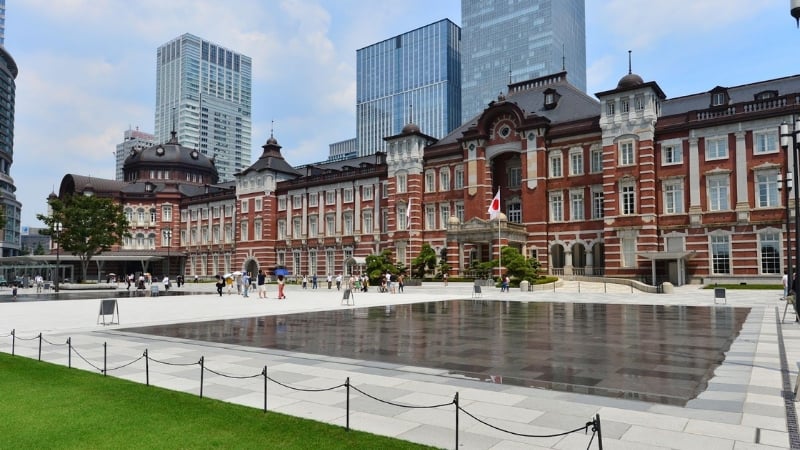
Image credit: JR EAST
Our journey began when we boarded the Hokuriku Shinkansen from central Tokyo Station to Fukui Prefecture, where we made a beeline for Awara Onsen. Another option was to travel by car but that wasn’t recommended because it would take six hours which is quite an arduous trip.
Our journey to Fukui Prefecture took roughly 3 hours. Along the way, we passed by Ishikawa Prefecture and Toyama Prefecture too.
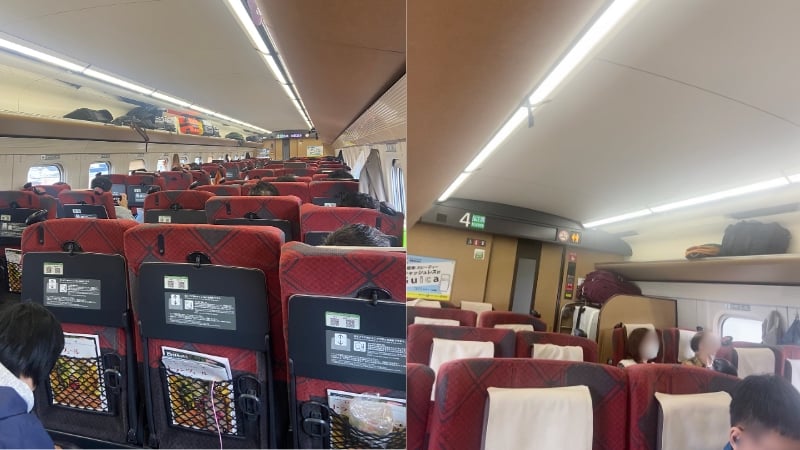
The seats in the Hokuriku Shinkansen are quite comfy and spacious, with plenty of leg room to boot. Each seat is reclinable and comes equipped with a power outlet and a large retractable table. Amazing! Whether you’re opting for an uninterrupted work session or taking that long-overdue nap, you won’t have a problem slumping into one or the other.
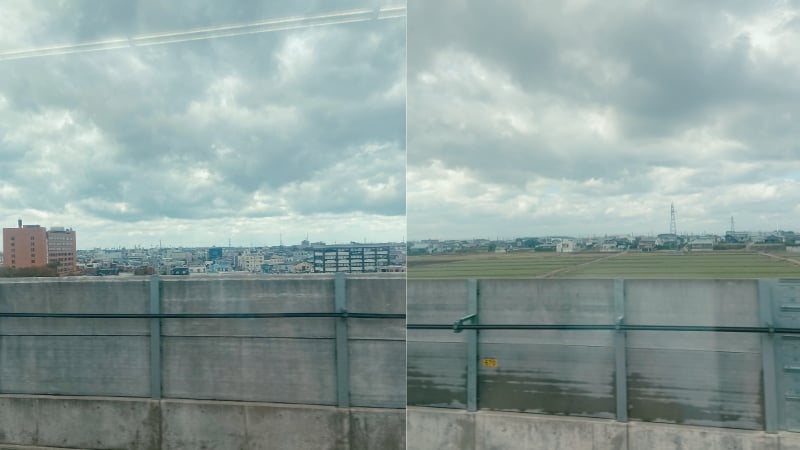
If it’s your first time taking the Shinkansen, you’ll want to sit in one of the window seats. As you race across the countryside, feast your eyes on the scenic views and watch the sprawling modern city dissolve into lush greenery.
TripZilla tip: There is a food cart on the Shinkansen (some trains may not have one) in case you go hungry. However, food options are limited. Before hopping on the Shinkansen at the Central Tokyo Station, head down to the basement level and grab a meal.
Day 1: Fukui Prefecture: AFLARE → Bachu Gofukuten → Awara Onsen Ashiyu → Darumaya → Asano Kogetsudo Confectionery Shop → Sentopia Arawa → Seifuso
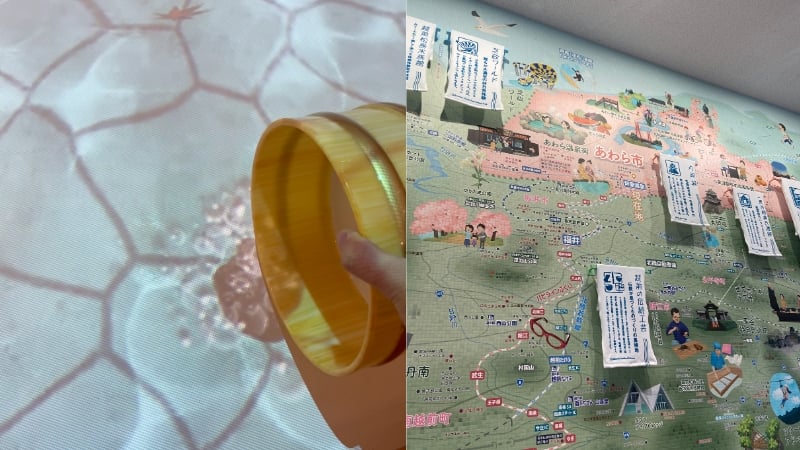
We made our first official stop at Awara Onsen Station. While we were excited to head straight for the relaxing hot springs, we made a short stop before we left the station. You see, at the 2nd floor lies an introductory space for worth-visiting attractions, an ode to the rich history behind Fukui Prefecture.
There’s an interactive VR station that allows you to simulate scooping a hot spring with a tub in a traditional onsen pond. What stood out for me the most was a wall adorned with a plethora of attractions nestled in Fukui Prefecture. Looking at the highlights on the map just made me even more excited for what was to come.
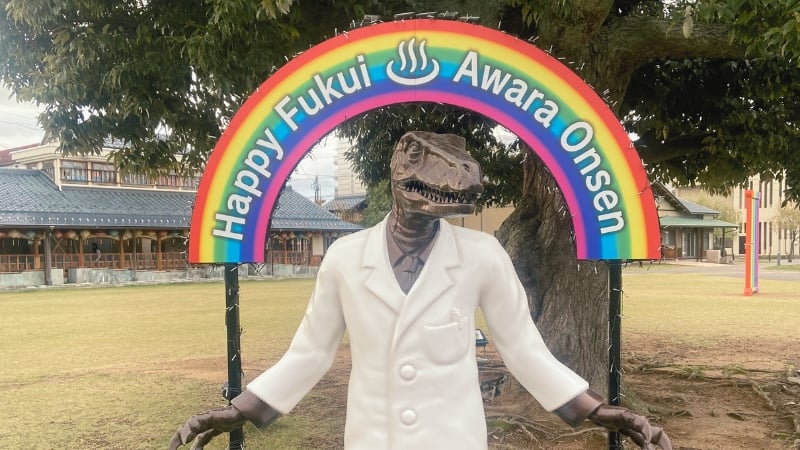
Leaving the station, we finally arrived at Awara Onsen. The hot spring area was discovered by accident when a well was dug to irrigate the paddy fields.
To better immerse ourselves in Japanese culture as we embarked on our Japanese onsen adventure, we decided to swap our modern cushy clothing for traditional Japanese attire. This brought us right outside the doors of Bachu Gofukuten, a store that offers rental service for hakama, traditional Japanese clothing.
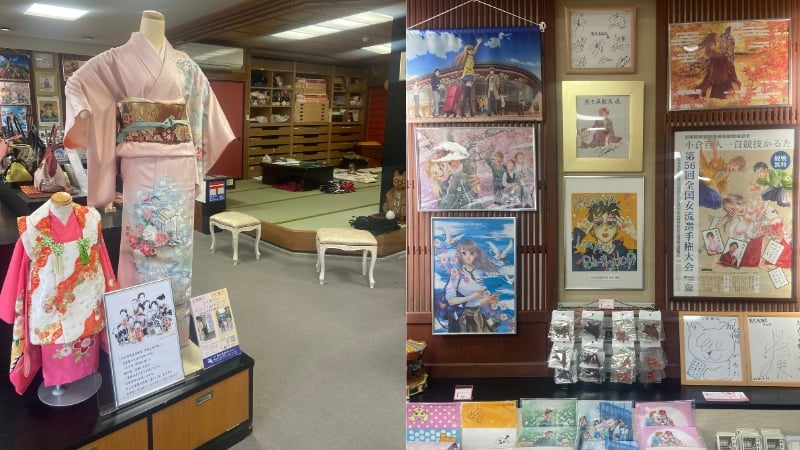
The rental shop is run by a gentleman and his mother who immediately illuminated the room with their warm smiles and an eagerness to share their passion for hakama with us.
Stepping into this place, as it turned out, unearthed a layer of cultural significance: The Kanazu area in the city where this Awara Onsen is located served as one of the settings for the popular Japanese anime and film, Chihayafuru. Once you’re inside the store, it won’t take long for you to notice Chihayafuru-inspired posters and postcards featuring characters donning the hakama, throwing a heartfelt homage to the beloved anime series. Bathrobe rentals, or yukata, are pretty common in all hot spring towns but here you can enjoy a rare hakama rental service to complete your onsen experience!
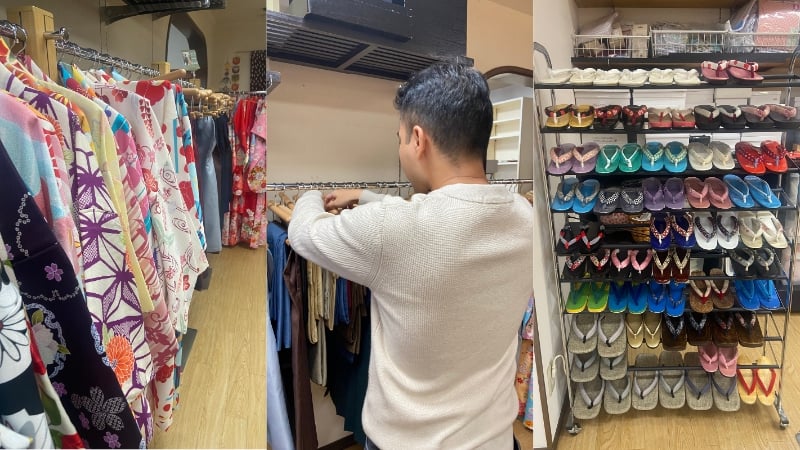
The clothing rack offers an array of choices for males and females. Whether you’re channelling the elegance of a sakura blossom, the whimsy of an anime character, or a minimalist aesthetic, you’ll find the perfect kimono-hakama for your style.
The process of choosing your hakama is simple: pick a kimono-hakama pair that suits you best and choose a pair of Japanese sandals to complete the ensemble.
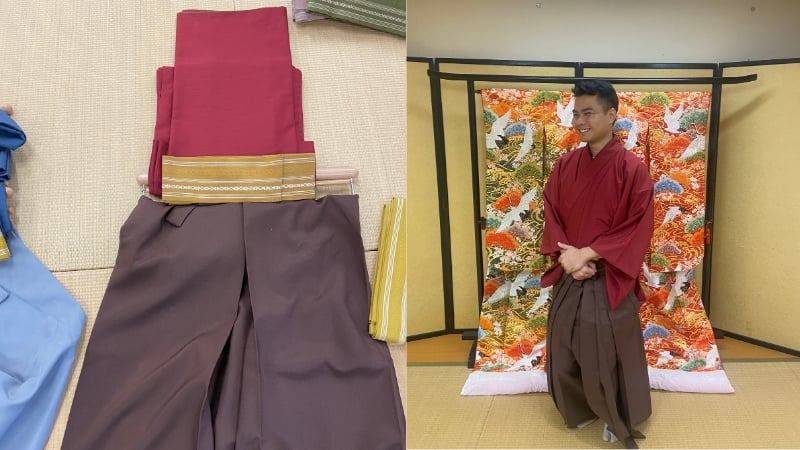
And voila! Once you’re satisfied with your look, head over to the photo spot which mimics the quaint look of old Japan, snap a photo, and be transported back in time!
Yes, as you might be able to tell from the photo above, I was beaming from both excitement and shyness as it felt surreal to have gotten the rare opportunity to wear a hakama and pose in it. Nevertheless, I was also feeling ecstatic that I was finally able to dress up as one of my favourite anime characters– Himura Kenshin, the lead protagonist from Rurouni Kenshin!
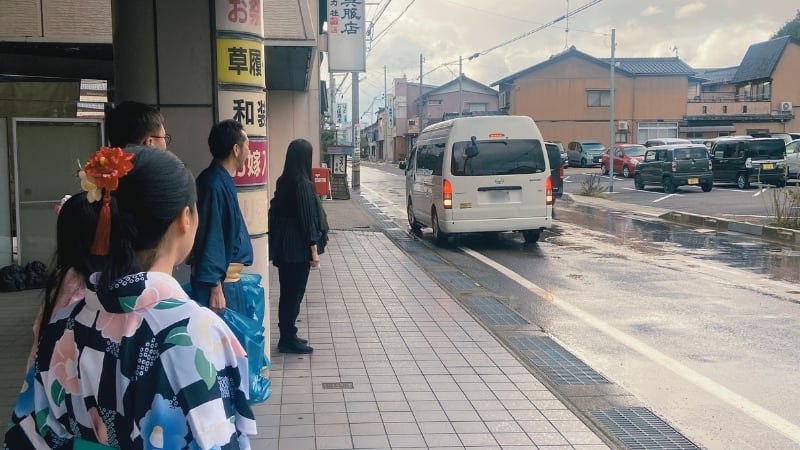
Stepping outside the shop in our newly donned hakama, the air around us felt different from when we first entered it (though, I must mention that I was only wearing a t-shirt to keep me warm on the inside which was really not that sufficient). The cold breeze was relentless as it whipped through the gaping holes of my hakama. This signalled our first foray into the cultural expedition we were about to embark on to relish in the yumeguri culture of Awara Onsen.
TripZilla tip: If you’re planning to travel here during the cold seasons, make sure you wear heat-insulated clothing under your hakama to keep yourself warm!
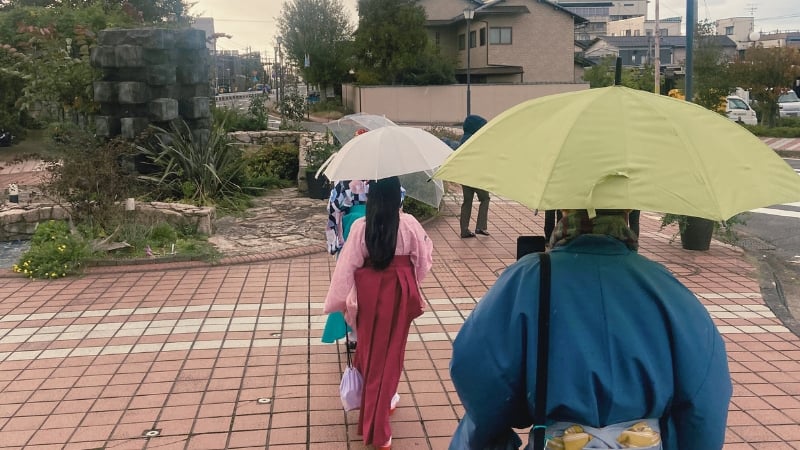
Awara Onsen is a town with a population of roughly 26,000 people. Left to our own devices and away from prying eyes, it didn’t take long for us to blend in. The muted colours of the surrounding buildings, minimalist architectural elements, and nostalgic ambience were an invitation to partake in the serene abode of Awara Onsen for those looking for a tranquil respite away from the hustle and bustle of city life.
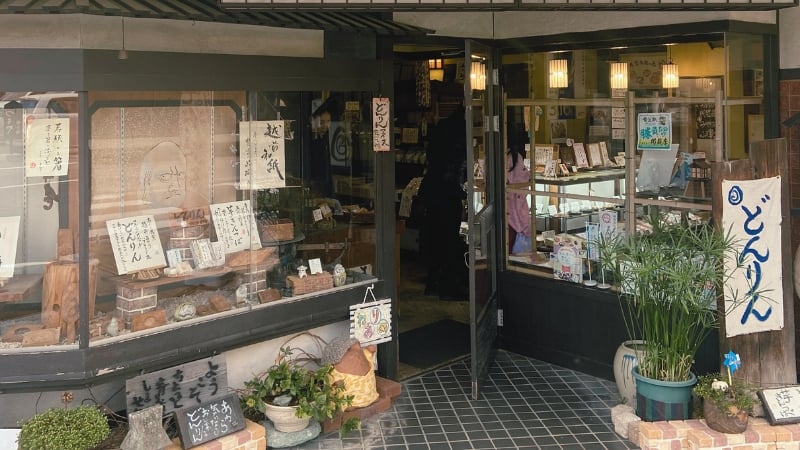
Our next stop in town was the charming Darumaya, a confectionery shop known for its unique snacks and candies. The shop’s rustic and quaint atmosphere immediately drew us in. Through the window, we spotted tempting Japanese sweets, and couldn’t resist the urge to check them out.
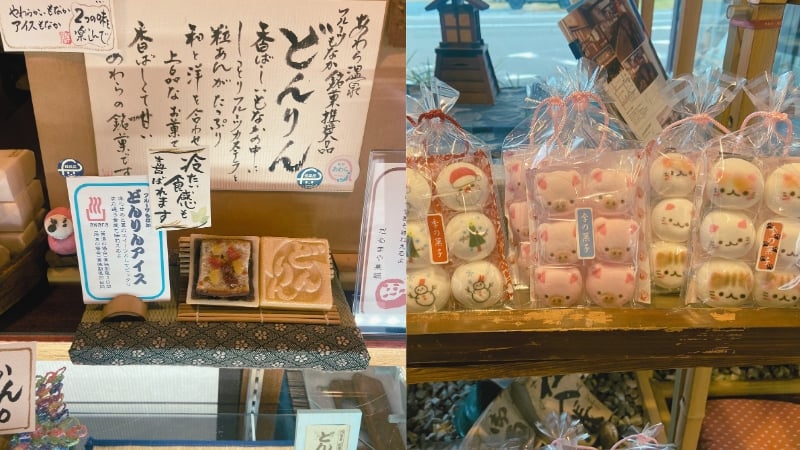
Donrin waffle sandwich. Right; marshmallows with animal faces
The store sells a variety of Japanese sweets from mochi to castella sponge cake, and crisp wafers. Here, Donrin is an in-house speciality with a waffle-like exterior and its filling is made up of red bean paste and fruit castella cake. The red bean paste has just the right amount of sweetness which allows the other flavours to shine. Umai! After buying one for a taste test, I immediately walked back into the store to buy more for the flight home!
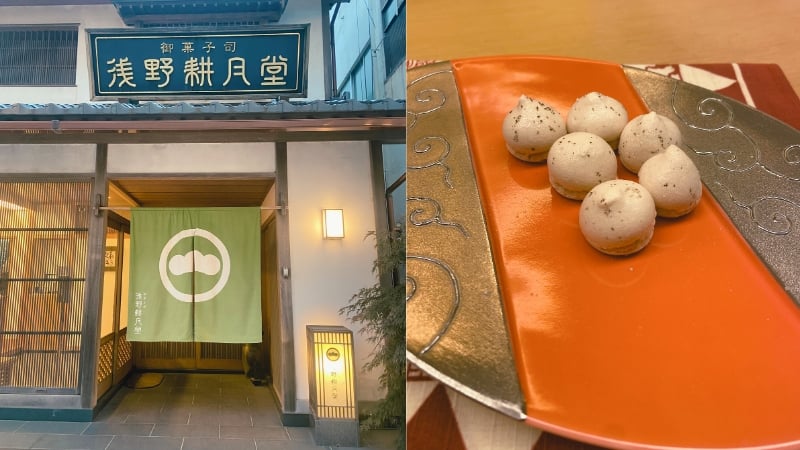
Just down the street is Asano Kogetsudo, another unique confectionery shop that specialises in sweets made with egg white and coffee. It is said that these sweets were offered to an emperor when he visited Fukui Prefecture, he liked it and took it home as a souvenir. The sweets were so light and airy that you would almost think they were once clouds that fell from the sky. Their taste was reminiscent of caramel popcorn and, surprisingly, Kueh Bangkit, a popular seasonal Singaporean snack.
As the day wore on and fatigue began to set in, I knew it was time to indulge in the town’s most famous offering: its hot springs. With 74 hot spring sources, Awara Onsen is a haven of relaxation. Perhaps this abundance of natural wonders is the secret to the town’s vibrant and peaceful ambience.
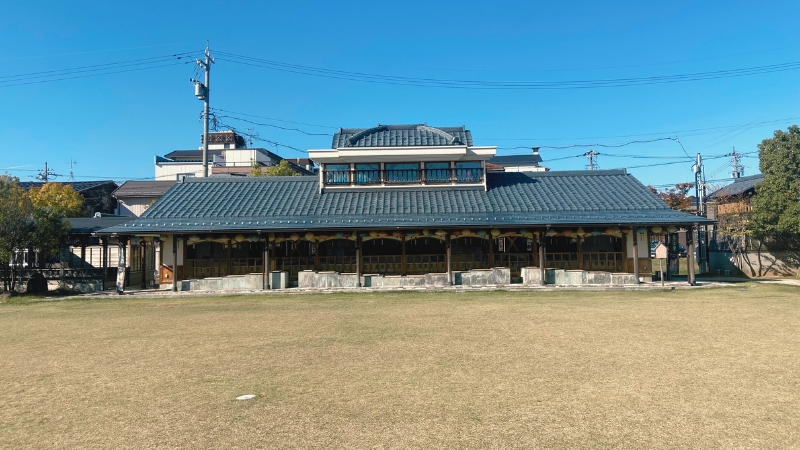
Outside the Awara Onsen Ashiyu footbath
Enter Awara Onsen Ashiyu, a popular public footbath that is free for both locals and international visitors. Unlike other onsen towns, Awara Onsen is unique for its hot spring baths as its hot spring waters come from a distinct source. Each inn has hot spring waters of different qualities and temperatures, and are renowned for their therapeutic minerals that have sublime health and skin benefits.
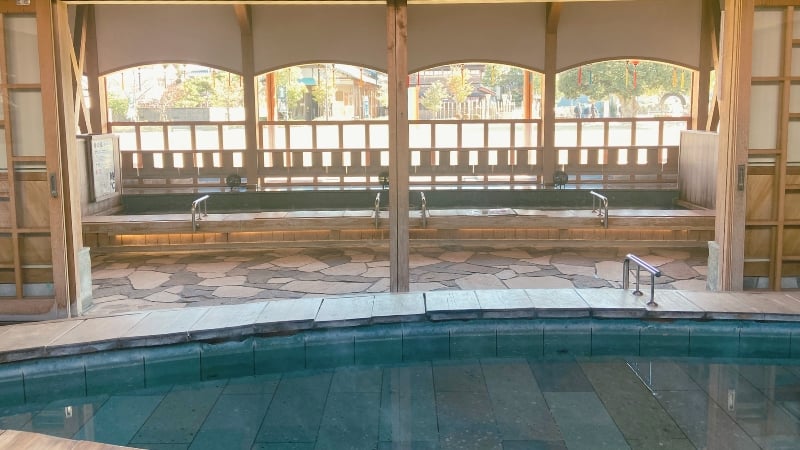
Interior of Awara Onsen Ashiyu
The reason why Awara Onsen Ashiyu is so popular amongst locals and visitors is because two hot spring sources converge here which means you get to enjoy hot spring waters of different temperatures! The extensive footbath accommodates five sections with hot spring waters of three different temperatures: two from distinct sources and one that is a mix of both. A dip in each area offers a soothing and relaxing experience, and the best part is that you get to enjoy the best of both worlds!
TripZilla tip: Test the water temperature before fully immersing your feet, as even the lowest temperature pool can feel quite hot. As the locals would say, “Atsui!”
In case you forget to bring a towel with you to dry your feet, fret not – this public footbath has got you covered! Here, you can buy a dry towel for 300 yen.
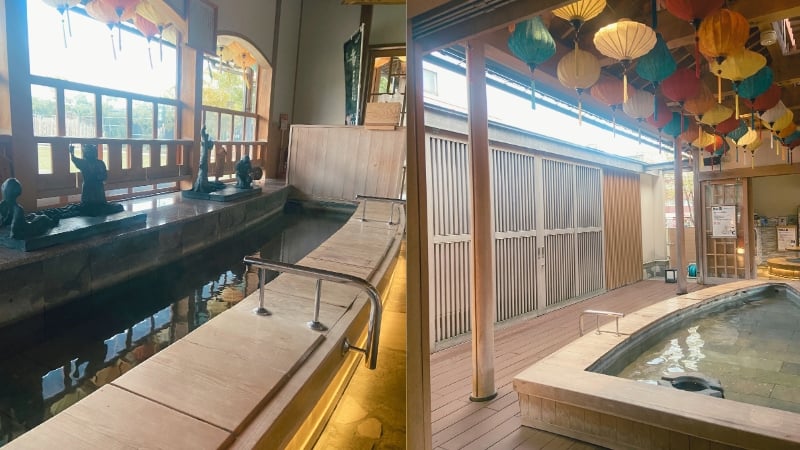
Beyond personal leisure, onsen towns like Awara Onsen offer a place for communities to deepen relationships and thrive. The recent extension of the Hokuriku Shinkansen line has made it much easier to visit this part of the onsen town, which is only a 10-minute drive from Awara Onsen Station. Locals and international visitors can look forward to going on a hot spring resort holiday with their families at Awara Onsen for a full day of family fun at one of these hot spring inns!
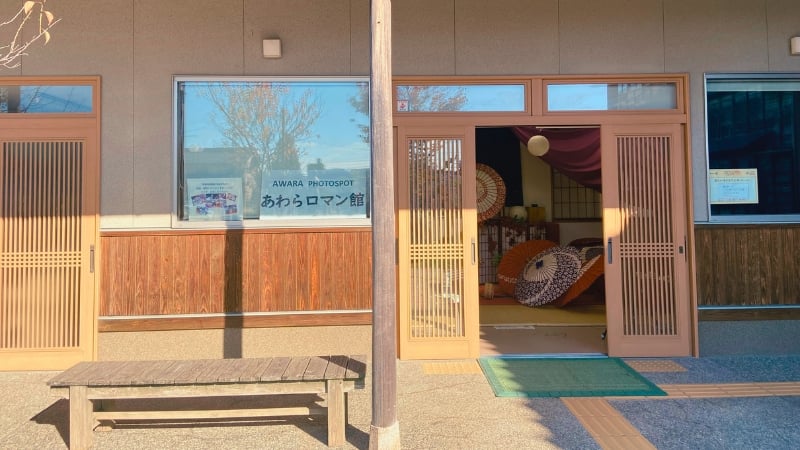
What’s more, the stroll around Awara Onsen town offers plenty of picturesque spots. Don’t miss the chance to have your own photoshoot at the nearby AWARA PHOTOSPOT Awara Romankan, just a short walk from the Awara Onsen Ashiyu footbath.
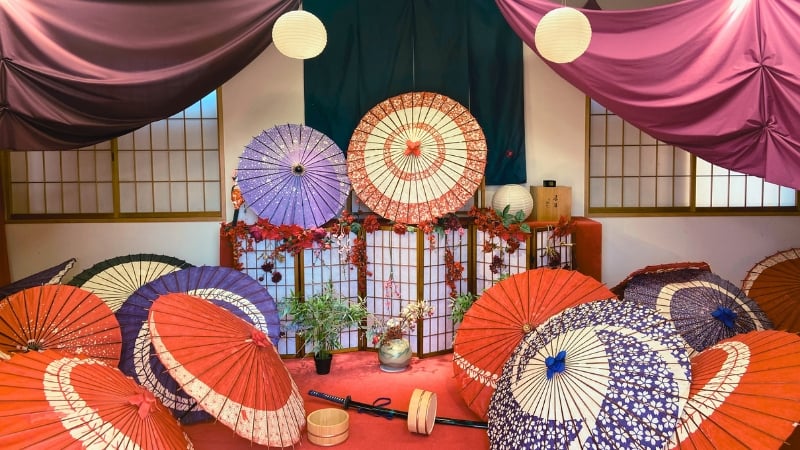
From wagasa — traditional Japanese umbrellas to a modest onsen water bowl, or a sleek katana, pick a prop and step into a world that blends Japan’s rich historical elegance and aesthetic beauty for a memorable hakama photoshoot. For our individual photoshoot, my travel buddies opted for the wagasa umbrella while I couldn’t resist the urge to wield the katana. Now, I think you know where I’m going with this.
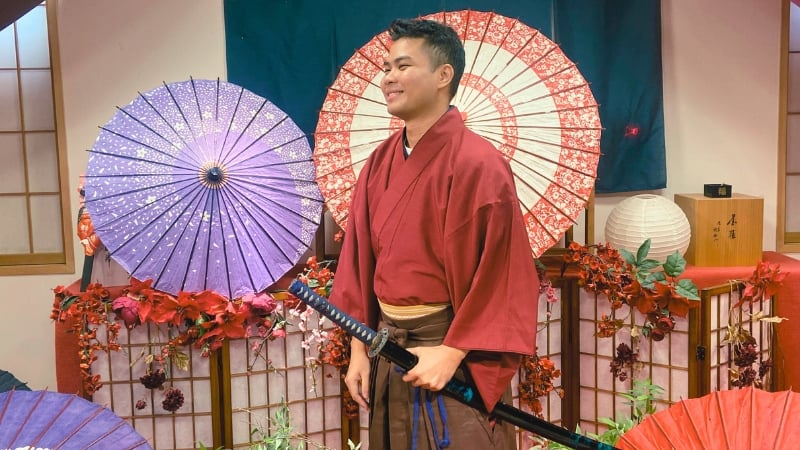
That’s right! I can proudly say that I’ve made my official debut in cosplaying, and what better way than to cosplay as one of my favourite anime characters (I’ll let the readers and especially the Rurouni Kenshin fans out there be the judge. Go easy on me, please).
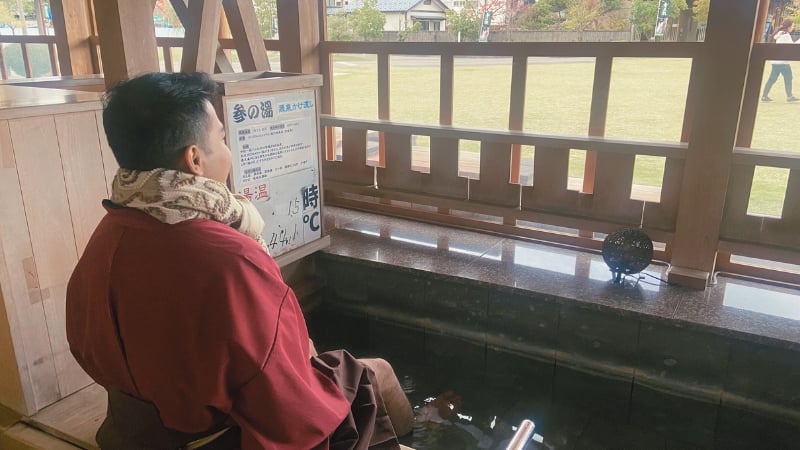
Mr. Yagi, chairman of the Awara City Community Development Visioning Committee, spoke to us about championing efforts to bridge the gap between the old and the young. He said that there is a greater need for young people who love the town.
As I soaked my feet in the relaxing hot spring waters of the ashiyu, I pondered on what he said. Gazing out at the picturesque town of Awara Onsen, a wave of gratitude washed over me, sparking curiosity about where this journey might lead me next.
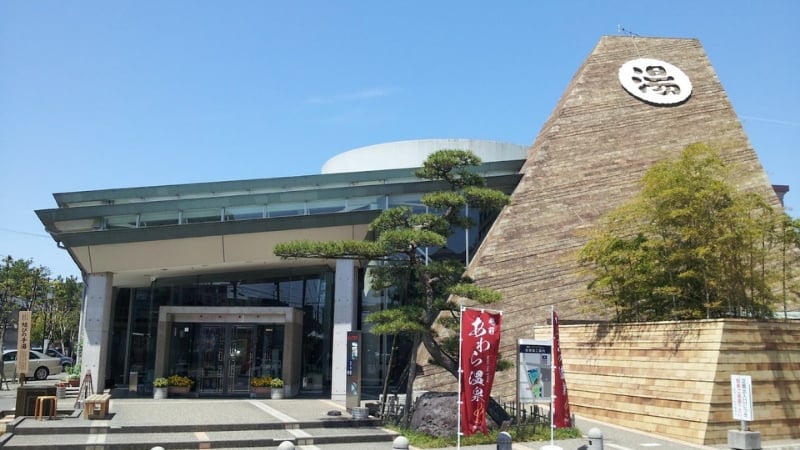
Outside Sentopia Awara | Image credit: Awara City Tourism Association
Nestled in the heart of Awara Onsen lies Sentopia Awara, which is a large public hot spring bathhouse. This bathhouse requires a fee and is well worth what you’re paying for two large bath areas, including an outdoor bath, Ten no Yu (Hot water of heaven, with outdoor bath) and an indoor bath, Chi no Yu (Hot water of earth, only indoor bath). These are on a one-weekly rotation between men and women.
The Ten no Yu is my personal favourite as it offers a sublime experience of the onsen culture. There, you can enjoy a lower body immersion while your upper body is exposed to the cool night air. This contrasting sensation, combined with the stunning night sky in the heavens, creates a truly unique and refreshing experience. If you start to feel chilly, head inside for a relaxing traditional Japanese steam bath or a soothing laying bath, bathed in soft, gentle light.
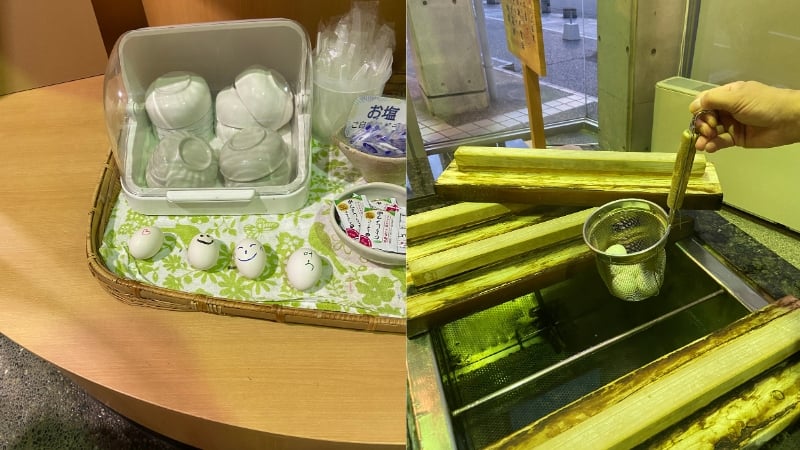
Of course, no onsen experience is complete without making your own onsen tamago! It’s a fun tradition to boil the eggs when you’re at an onsen. Enjoy them with a sprinkle of salt or a hearty splash of soy sauce – the choice is yours!
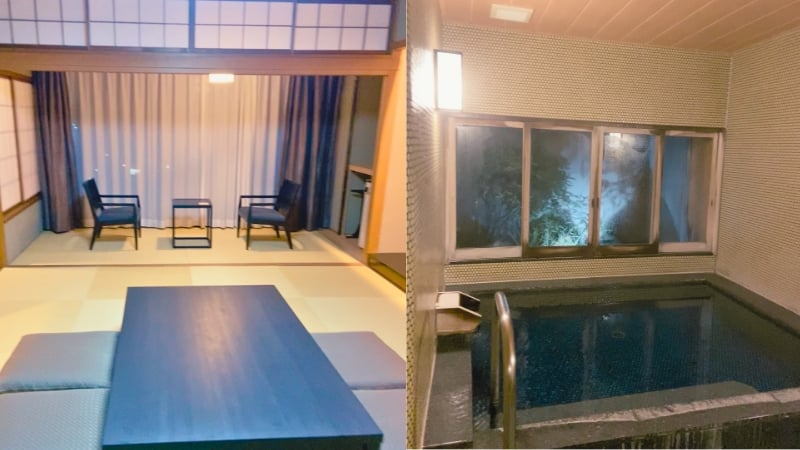
We ended the day by spending the night at Seifuso, an award-winning ryokan that won last year’s prestigious Golden Award from Japan’s premier travel agency, Rakuten Travel! And yes, the hot spring waters that flow inside come from natural sources, continually replenishing the baths with fresh hot spring waters!
Worried about public bathing? Fret not– many onsen ryokans in Awara Onsen, like Seifuso, offer private bathing rooms or even rooms with exclusive onsen access. Talk about world-class comfort!
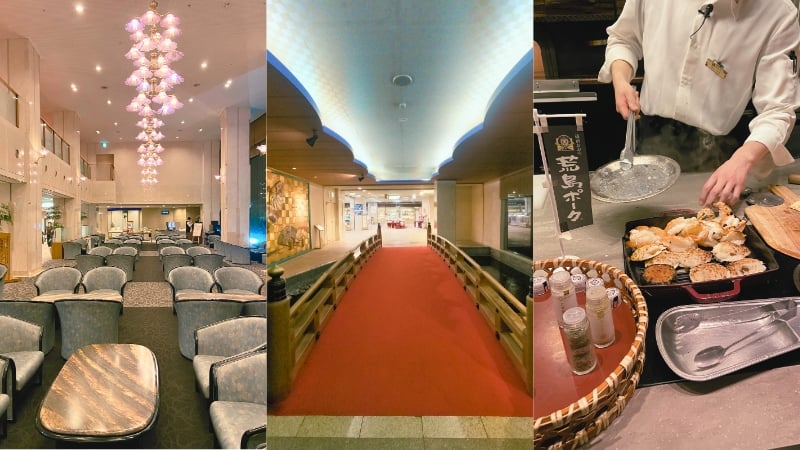
Onsen ryokans are like the ultimate Japanese onsen experience. Imagine indulging in traditional Japanese hospitality and soaking in the rejuvenating waters of your own private hot spring. Add delicious local food and exploring a charming onsen town, and you’ve got the perfect family getaway!
Day 2: Ishikawa Prefecture: Omicho Market → Sake Shop Fukumitsuya Kanazawa → Hashitate Fishing Port → Sushi Waka
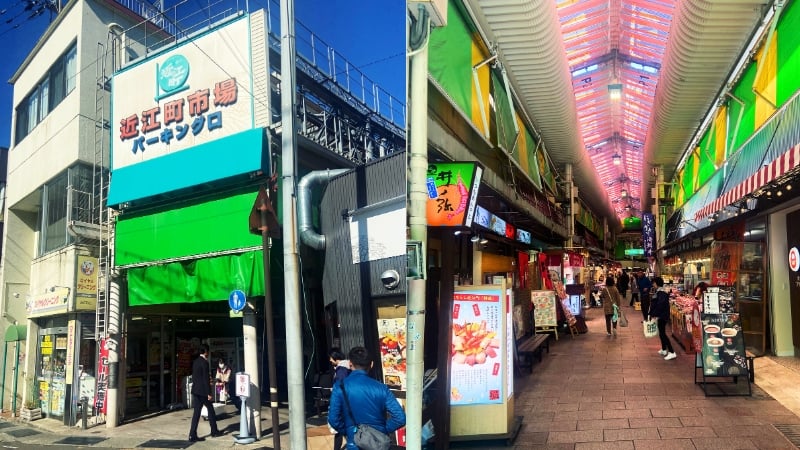
The following day, we moved upwards to Ishikawa Prefecture, venturing deeper into Japanese culinary delights. There, we made our first stop at Omicho Market, which has been known as the beating heart of Kanazawa food culture for more than 300 years!
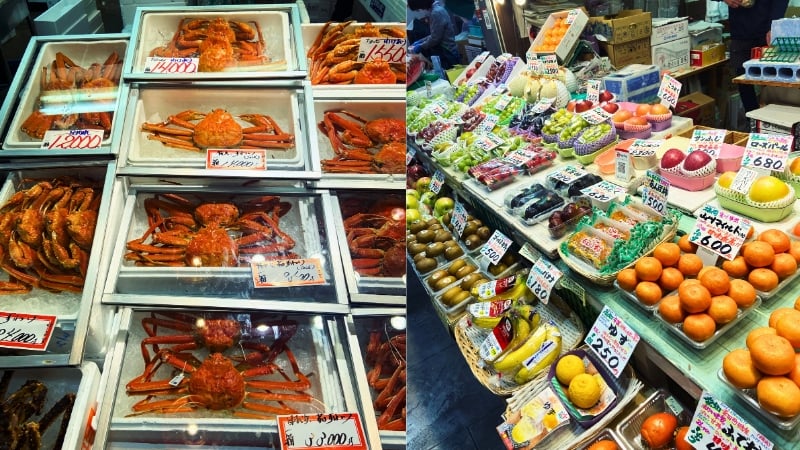
At this sprawling market, you’ll find around 170 stores selling a large variety of fresh local produce and freshly caught seafood from the Sea of Japan.
Depending on the season, fishmongers focus on different catches, selling a variety of seafood at their stalls. For instance, the market was flooded with crabs when we arrived, and we learned that the crab fishing season had just begun. Around this time of the year, these stalls ramp up their businesses as they expect to sell crabs.
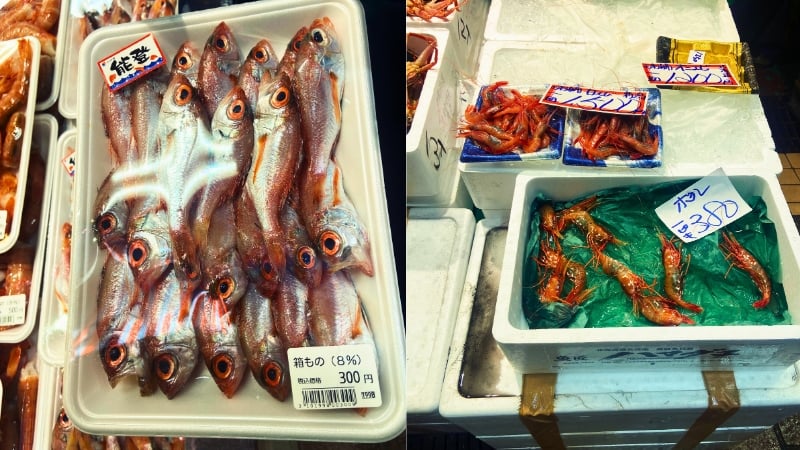
Aside from crabs, there are other kinds of seafood being sold which are popular delicacies during different seasons in Japan. For instance, yellowtail fish is widely consumed during the autumn and winter months, perch fish (Suzuki) is popular during the summer and autumn months, while Gasu shrimps (Rustling Sweet shrimp) are fantastic delicacies that are enjoyed from Sep to Jun (expect summer season).
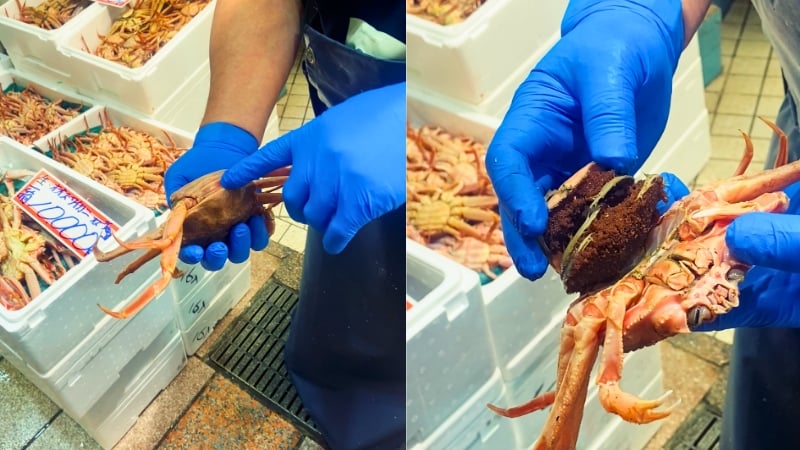
A local seafood retailer showing us the eggs inside a Kobako-gani crab
We had a candid conversation with a local seafood retailer who told us that fishmongers in Japan put much emphasis and attention on fresh seafood catches. This is done through bidding processes at fish auctions to ensure high-quality seafood in terms of freshness and flavour. Notably, Kobako-gani crabs (female snow crabs) are a gem among the winter delicacies sold around the market. Locals enjoy having them as a delicacy due to the delicious eggs stored in their sotoko (belly) and uchiko (shell), giving them a buttery and multi-dimensional flavour!
It is no wonder that the dishes at seafood restaurants in Japan are well-revered for their exquisite taste. This dedication to quality is a testament to the pride and discipline of Japanese fishmongers, ensuring that only the freshest and quality seafood enters restaurants and reaches the tables of the Japanese people.
While fresh seafood is key, Japanese sake plays a vital role in shaping their flavours! Our next stop taught us that good sake can really elevate the taste of seafood.
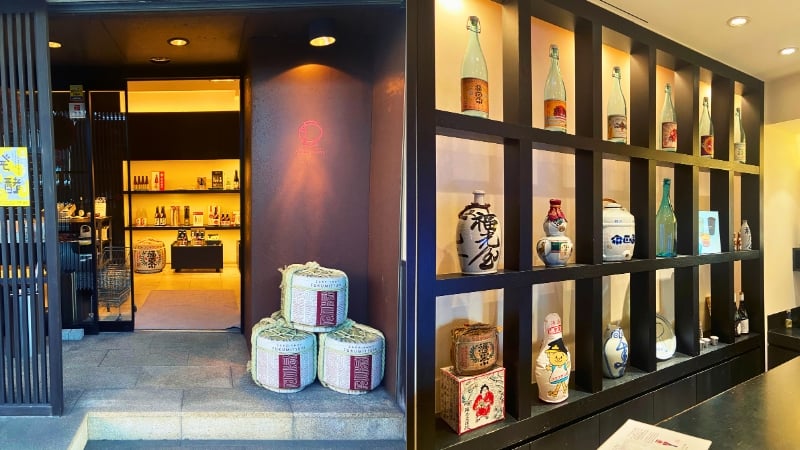
Outside of the Sake Shop Fukumitsuya Kanazawa’s directly managed store in Kanazawa. Right; sakes on display over the counter
Fukumitsuya, a historic sake brewery dating back to 1625, is a must-visit for sake lovers. This brewery specialises in Junmai sake (Japanese rice wine) which is only produced using rice and water, as compared to other sake breweries that use distilled alcohol in their sake production.
Fukumitsuya produces a wide range of Junmai sake, perfect for pairing with local delicacies. We were given a brewery tour, and a taste of their finest sakes, all whilst learning about the art of sake-making and Kanazawa’s rich culinary heritage.
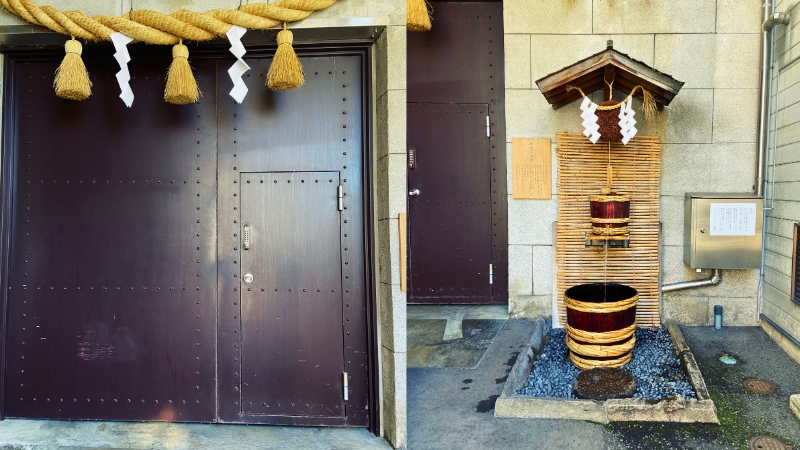
Entrance of Fukumitsuya Sake Brewery in Kanazawa. Right; 100-year-old filtered water that flows directly to the brewery
The brewery tour gave us incredible insights into sake production, like how Kanazawa is an ideal place for Junmai sake production because it is close to Mount Haku, bringing 100-year-old naturally filtered waters with high minerals, and the accessibility of shuzo kotekimai (sake rice), a rice breed specifically grown and harvested for making sake.
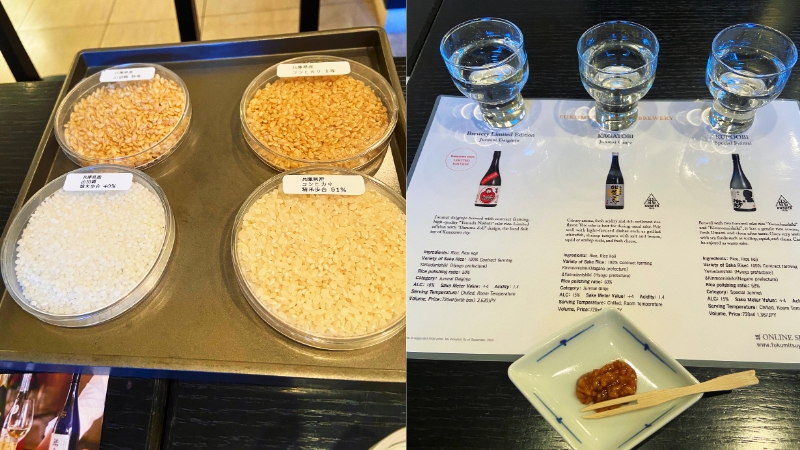
Different sake rice with varied rice polishing ratios. Right; three different Junmai sakes for sake-tasting
Another crucial factor in sake production is the rice polishing ratio which produces different sakes with distinct aroma and flavour. To better understand this, we sat through a sake-tasting session, pairing three different Junmai sakes with a little snack to better appreciate the nuances across the different sakes. The nuanced flavours are not immediately noticeable, but they complement the seafood dishes in bringing out their true flavours for an exquisite culinary experience!
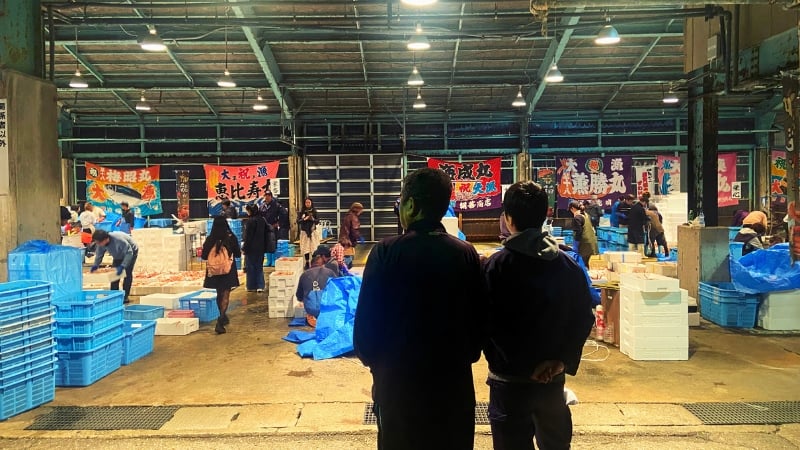
As we ventured deeper into Japanese culinary delights, we found ourselves at the doorsteps of Hashitate Fishing Port, one of the leading fishing ports in Ishikawa Prefecture, where a fishing auction takes place regularly.
Here, a variety of seafood catches are sorted out for the auction that would take place on the same night. Various types of seafood are meticulously sorted by quality and size, and then packed into boxes with ice to maintain freshness.
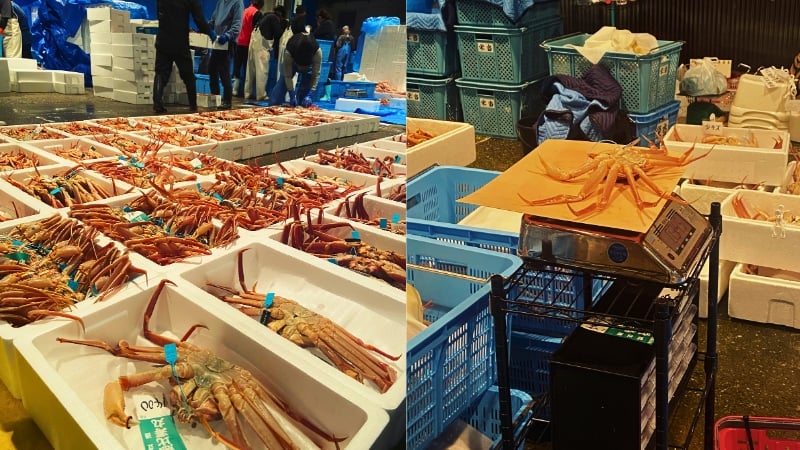
Trivia: Once in a while, amongst the sea of fishes, one crab will emerge as a worthy contender for the glorious title of the Kagayaki crab. Kayagaki, which means ‘radiance’ in the Japanese language, is the highest standard conferred to a crab for its incredible quality and freshness. The chance of catching it is only 1 in 20,000 crabs!
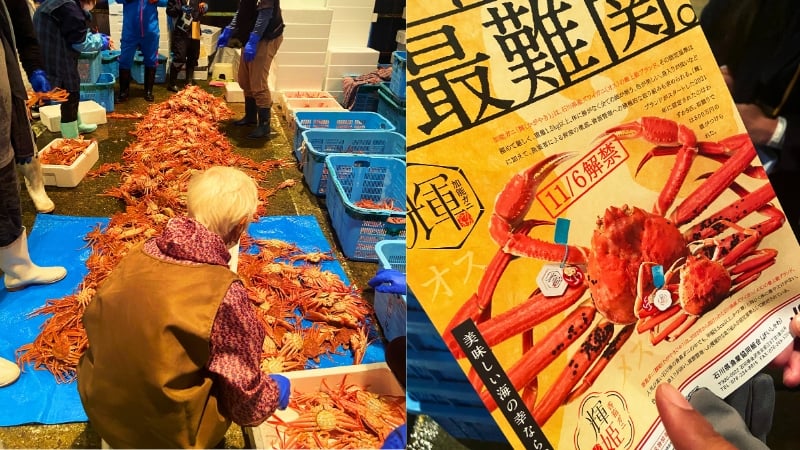
Apart from crabs, there were also other types of seafood that were part of the auction. These included Japanese ivory shellfish, red flatfish, and Gasu shrimps (Rustling Sweet shrimp) which taste like crab when cooked!
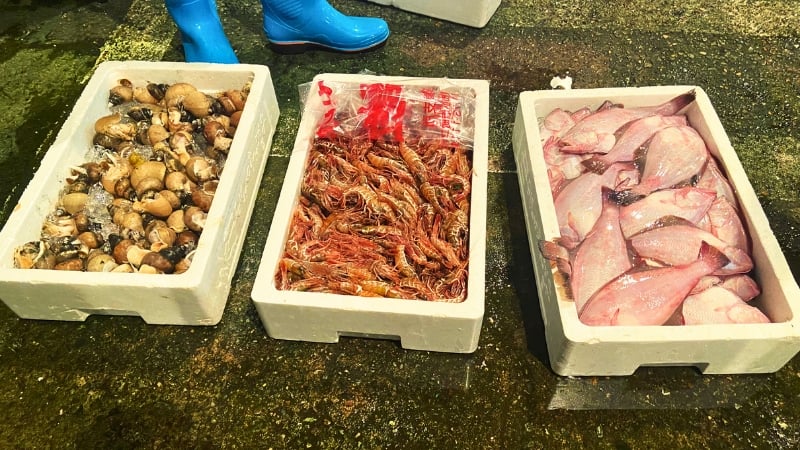
To cap off our seafood adventure in Ishikawa, we indulged in a sumptuous dinner at Sushi Waka. This meal was the perfect way to savour the freshest seafood Hokuriku has to offer.
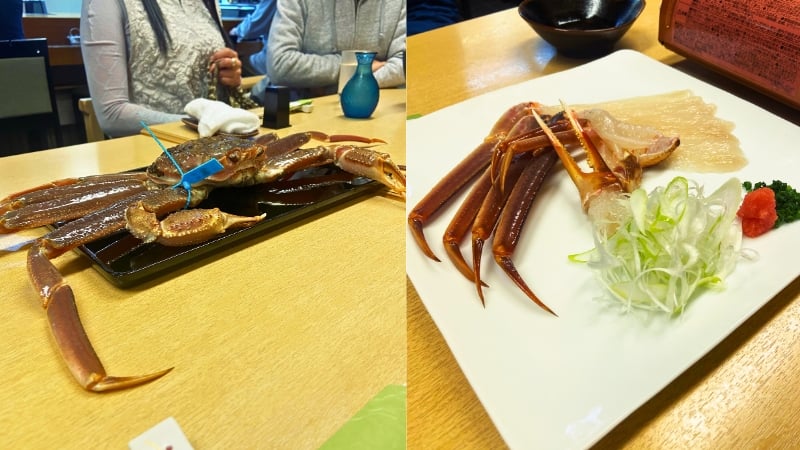
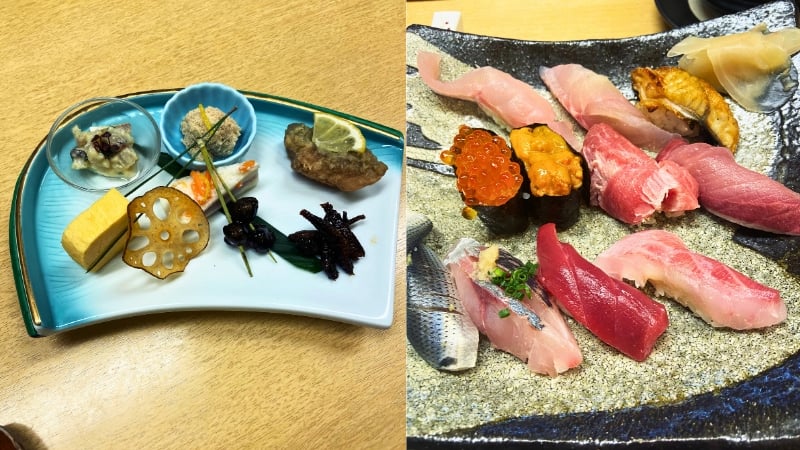
Day 3: Ishikawa/Toyama Prefecture: Itaya Honten → Teraoka Fuusha Kanazawa → The Murakami Residence → Johana Hikiyama Festival Floats Museum → Matsui Silk Weaving
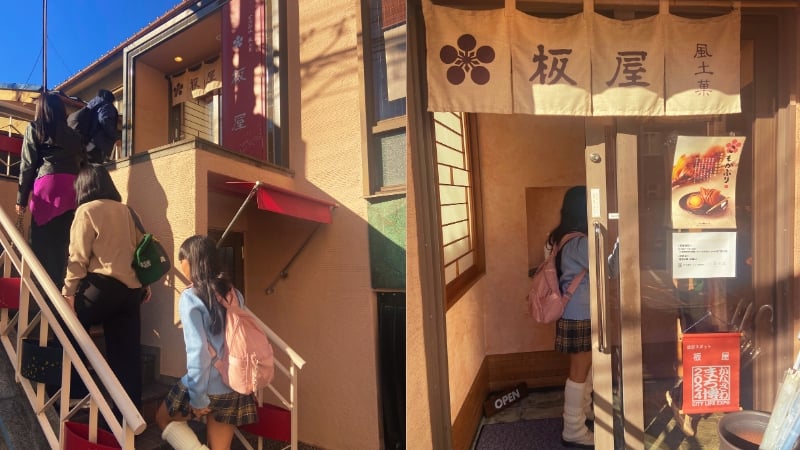
The following day, we visited Itaya Honten, a popular confectionery shop that went viral on YouTube and TikTok. This shop is famous for its wagashi called Komo-kaburi and is a testament to the region’s rich cultural heritage. This confectionery exemplifies the artistry and craftsmanship of Kanazawa’s confectioners, who have skillfully incorporated local traditions into a delicious treat.

Inspired by the traditional method of protecting walls from snow, this sweet boasts a distinctive shape. Inside, a large chestnut is wrapped in sweet bean paste, creating a delightful flavour combination. The Nori seaweed, an unusual addition to artisanal desserts, adds a quirky charm that makes it photogenic!
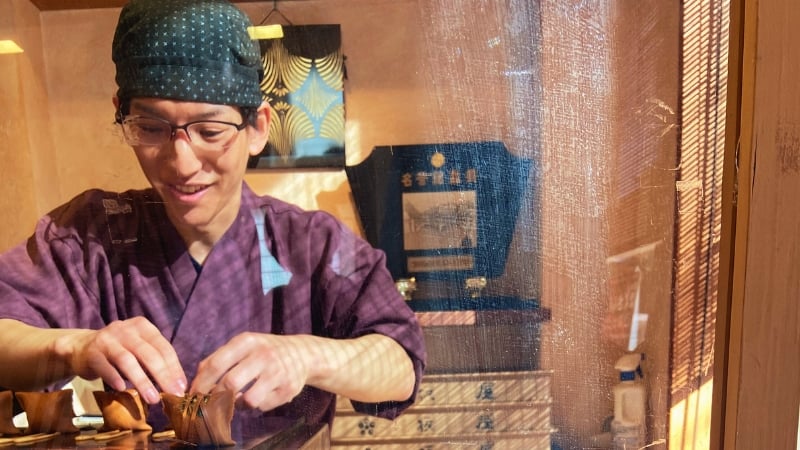
Mr. Itamura is the 4th generation successor to Itaya which opened around 80 years ago.
Kanazawa’s traditional sweets are a testament to the region’s artistry and craftsmanship. These exquisite confections, often inspired by the wonders of nature, appeal to both traditional and modern tastes.
Next, we visited Teraoka Fuusha Kanazawa, a renowned restaurant for Noto beef, which is another prized gem in Ishikawa Prefecture. Noto beef is consumed almost exclusively in Kanazawa and other parts of Ishikawa Prefecture, with very little exported outside the region. In other words, this is a delicacy you can only enjoy by coming here.
The unique taste of Noto beef is attributed to the fertile lands of the Noto Peninsula, a UNESCO World Agricultural Heritage Site. This cultural and historical significance adds to the allure of savouring this exquisite delicacy. Mr. Teraoka, the owner of the restaurant, revealed another fascinating aspect of Noto beef: each cow is meticulously tracked from birth to plate. This meticulous approach, combined with the high oleic acid content of the beef, results in a truly exceptional flavour and aroma.
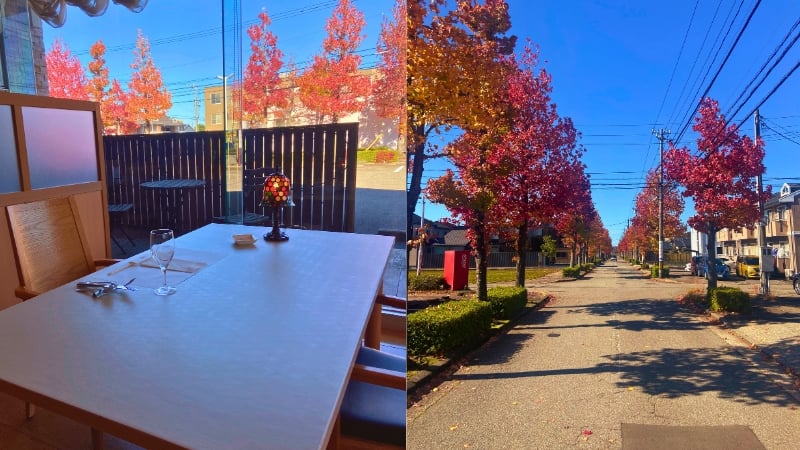
Here, if you visit in autumn when the leaves are changing, you can indulge in a picturesque dining experience surrounded by stunning autumn foliage. Savour your meal while admiring the vibrant red leaves, then step outside for some breathtaking close-up shots!
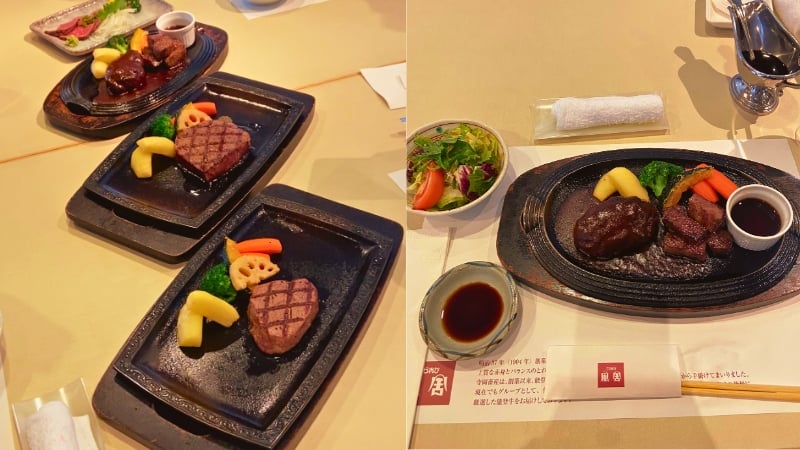
Different cuts of Noto beef unveil unique dimensions to its taste, allowing you to customise your culinary experience! For instance, the shoulder cut is perfect for shabu-shabu, while the thigh cut is ideal for sashimi.
Preserving traditions isn’t just about food; it’s also about cultural practices. Matsuri, or traditional Japanese festivals, are vibrant expressions of this cultural heritage. Our journey continued to Toyama Prefecture, where we delved deeper into these rich traditions.
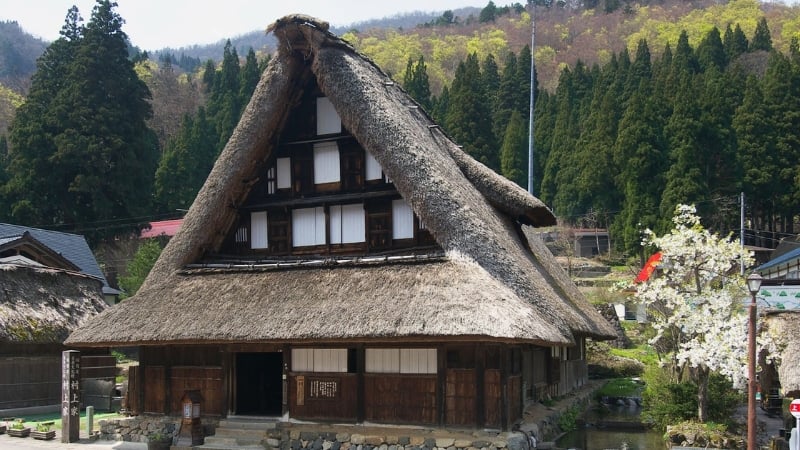
Image credit: Nanto City Tourism Association
The Murakami Residence, a 400-year-old testament to history and resilience, is one of the oldest A-frame homes. In a time when rice was a precious commodity, the family played an important role in the Kaga clan by producing a raw material for gunpowder known as saltpeter to fulfil their tax obligations.
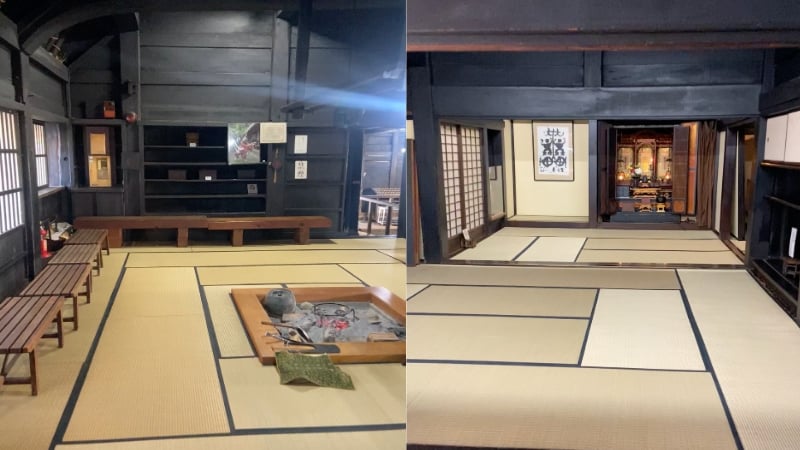
The house, constructed without nails, is a marvel of traditional architecture, designed to withstand the harsh winter snows and potential earthquakes. It’s a place steeped in history, where political prisoners in the Kaga clan were once held captive and where ancient techniques, like silkworm cultivation and gunpowder production, were practised.
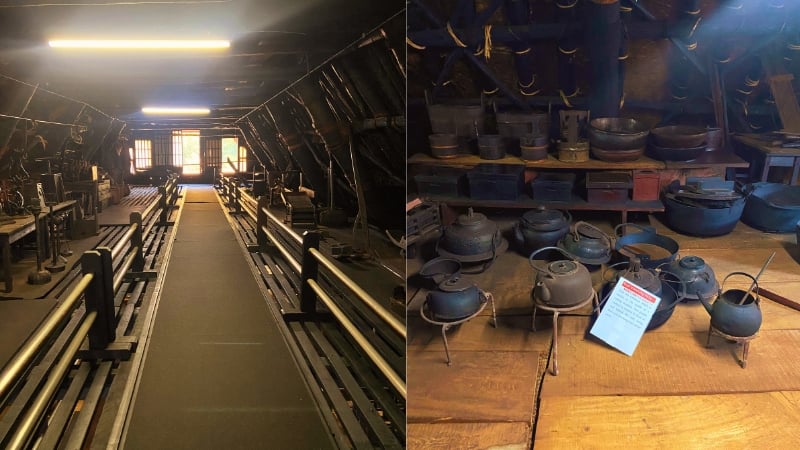
As we headed upstairs, all sorts of antique household items and rustic kitchenware were put on display. The unique blackening of the objects and wood, a result of the smoke from the coal fire, adds to the house’s historical charm.
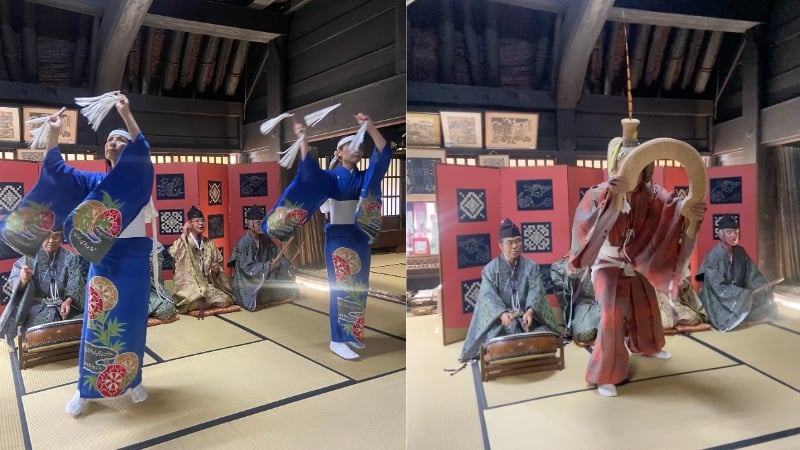
This head of the family and the inhabitants of this area continue to honour their heritage through cultural performances, such as the Kokirikobushi folk song and Kokiriko dance offering to the gods for a bountiful harvest. The Kokirikobushi folk is the oldest folk song in Japan and has seeped into a long history and cultural importance. It was derived from important cultural traditions such as the dengaku (rice field music) and dengodori (rice field dance).
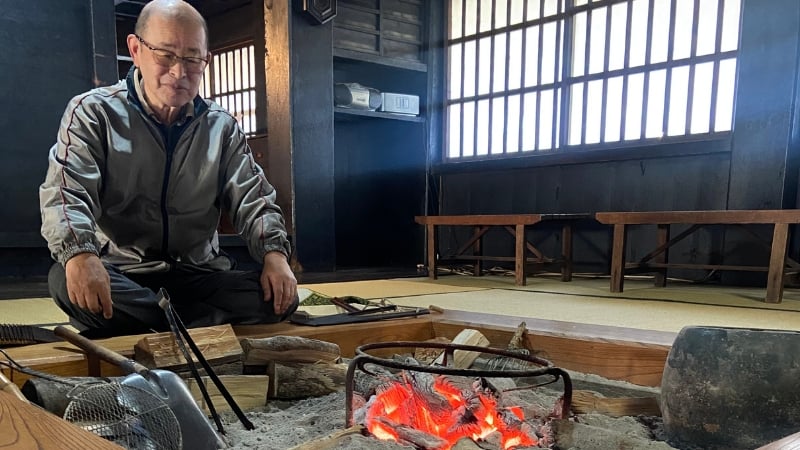
As we gathered around the hearth, the owner shared captivating stories of the house’s rich history. The person who inherits the house inherits the name, Chubei, which has been passed down through generations. However, the current inheritor fears he may be the last to carry on this tradition.
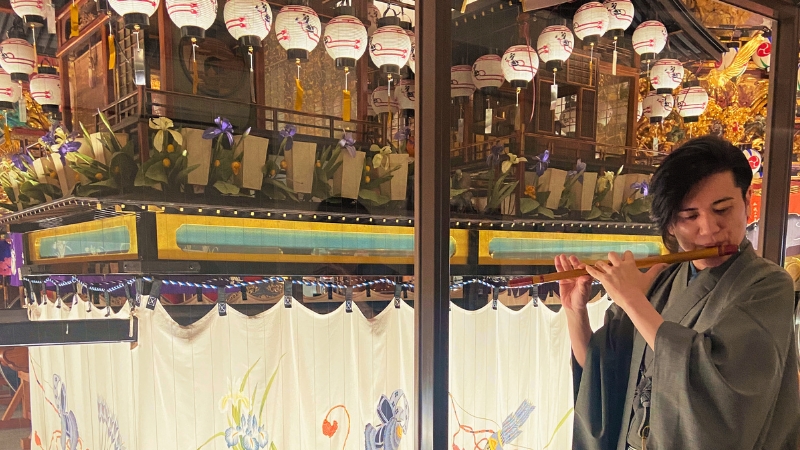
Mr OHARA Jigoemon XVI, who gave us a tour of the Johana Hikiyama Float Museum, performed a special shinobue flute performance for us.
To better understand the cultural significance and history behind matsuri, we visited the Johana Hikiyama Festival Floats Museum and met up with Mr. OHARA Jigoemon XVI, the 16th-generation successor of Johana Maki-e (gold lacquer) art.
The Johana Hikiyama Festival, a UNESCO Intangible Cultural Heritage, is a testament to the rich history and artistic cultural traditions of Japan. This festival is also a day to honour ancestors. The first Iori-uta (special traditional songs in the Johana area) is performed at the stone monuments of contributors such as Mr. Ohara Jigoemon VII, and Mr. Araki Wasuke, a doll sculptor, celebrating the tradition and history of the festival.
This annual Johana Hikiyama Festival features six floats from among the nine towns under the shrine’s jurisdiction. The Johana Hikiyama Festival, which continues to convey the elegant culture of the Edo period to the present day, is a captivating display of Japan’s rich cultural heritage.
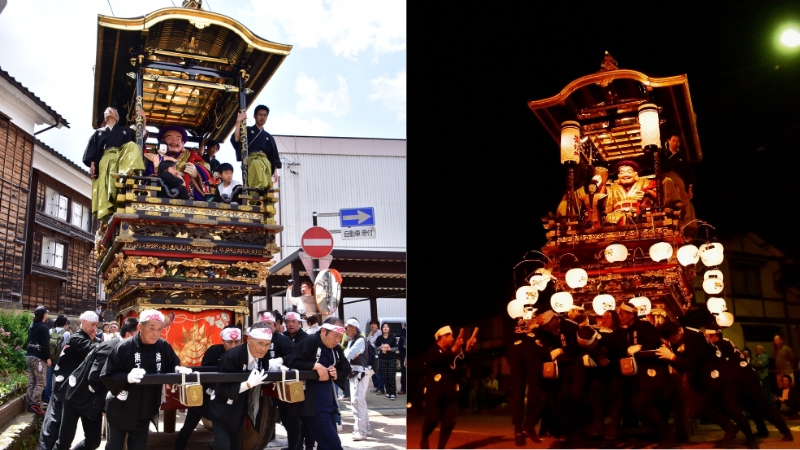
Image credit: ©Nanto City Tourism Association
As we toured the museum, we were given a rare opportunity to get up close to the floats. Closer inspection of the lacquer art that is imbued on the float highlighted a profound realisation of the timelessness and elegance of these floats.
The Johana Hikiyama Festival has evolved over 300 years. It features Kasahoko umbrellas, Hikiyama floats, and meticulously crafted Iori-yatai stages modelled after places like Edo’s Shin-Yoshiwara, Gion’s Ichiriki Chaya, and Shimabara’s Sumiya.
The term Hikiyama literally means “pulling a mountain,” where the guardian deities are thought to reside, symbolising the bringing of wealth and prosperity to the town. The housing chamber at the top of the float carries the statues of the gods to honour this sacred belief.
Each float requires a team of 30 people to pull it and in each town, young participants are responsible for performing the festival music and Iori-uta songs inside the Iori-yatai stages. The intricate details and craftsmanship of these floats are a testament to the dedication and skill of the hundreds of people involved in their creation and operation.
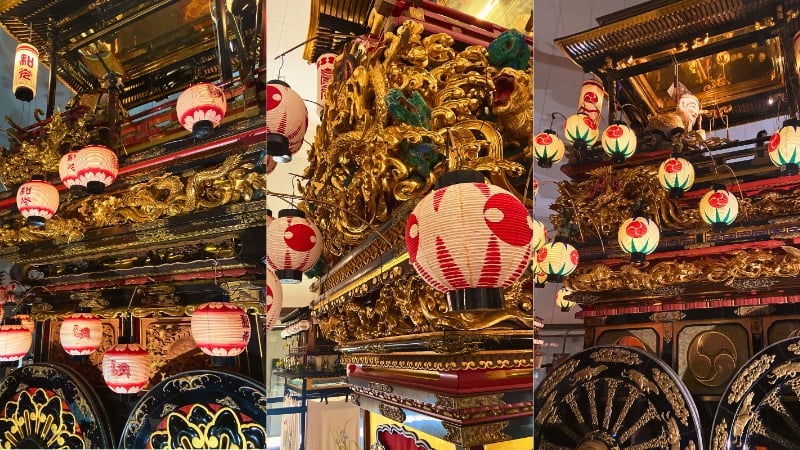
One of the striking features of these floats is the kamon symbol on the lanterns which correspond to the different family crest representing each town. For instance, the Senmaibundo, a counterweight made from a thousand large oval coins, symbolises wealth and prosperity while the Mitsudomoe symbol is believed to ward off evil spirits.
Matsuri in Japan reflects sacred family and cultural traditions that have been passed on for many generations. These historical Hikiyama floats, imbued with modern contemporary art, reflect the hopes and desires of the new generation to keep these sacred traditions alive for a long time.
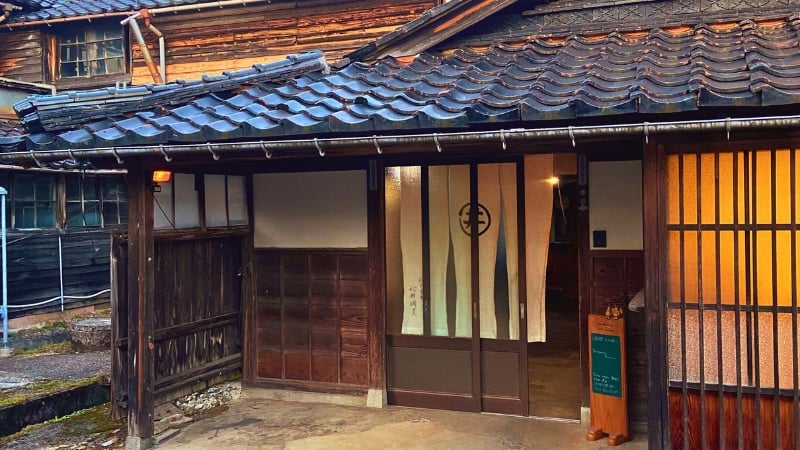
Back in the Edo period, silk textile businesses were beginning to flourish which created opportunities for cultural exchanges to take place, introducing Johana’s unique art to the wider population, and laying the foundations for matsuri.
To understand its impact on matsuri festivals, we traced the footsteps to Matsui Silk Weaving, a family-run business with a rich history dating back 450 years, a testament to the enduring tradition of silk weaving in Japan.
The ideal climate and water conditions of Johana have made it a prime location for silk production. Over the years, the family has perfected the art of silk weaving, from raising silkworms to creating exquisite fabrics.
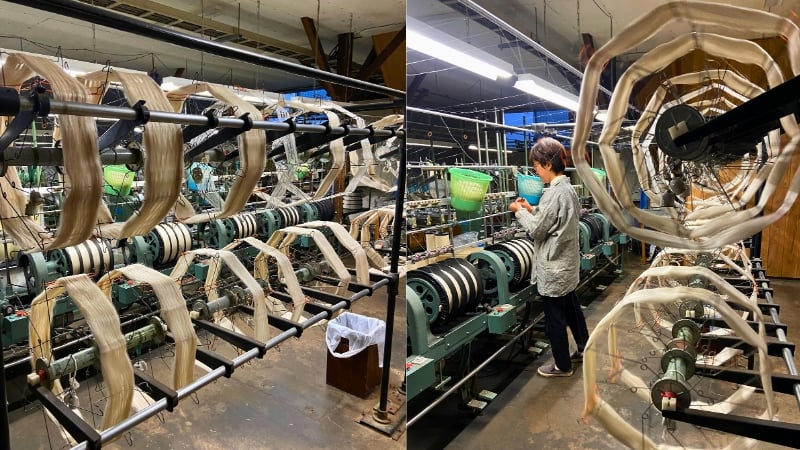
The process is meticulous, with each step carried out with care and precision. The silkworms, treated with utmost tenderness, produce precious silk threads that are then transformed into beautiful fabrics. Ms. Matsui who gave us a tour treats these silkworms with the most affection that she even wants to give each of them a name. How lovely!
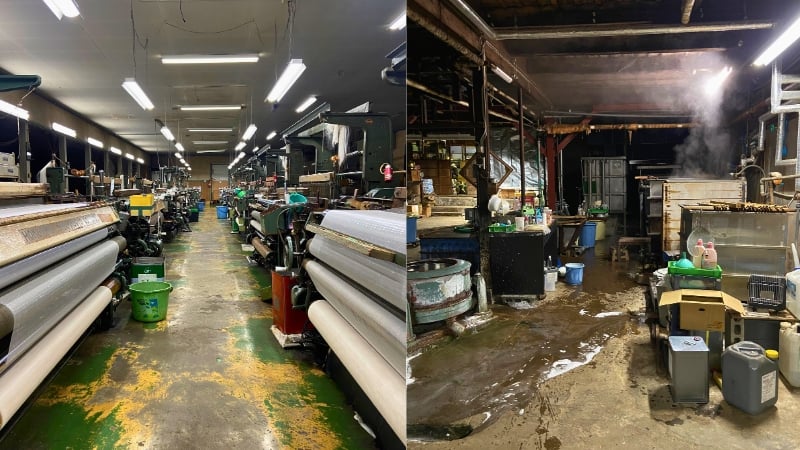
Stepping into the main workshop, we saw how the art of silk weaving has been kept alive all these years with modern machinery. She even shared a cute story about how her husband helped build some of them, and that’s when she knew she’d found the right one.
The family’s commitment to tradition is evident in their use of contemporary techniques and tools, such as the steam room, which was built 110 years ago, used to soften the woven silk fabric and for dyeing.
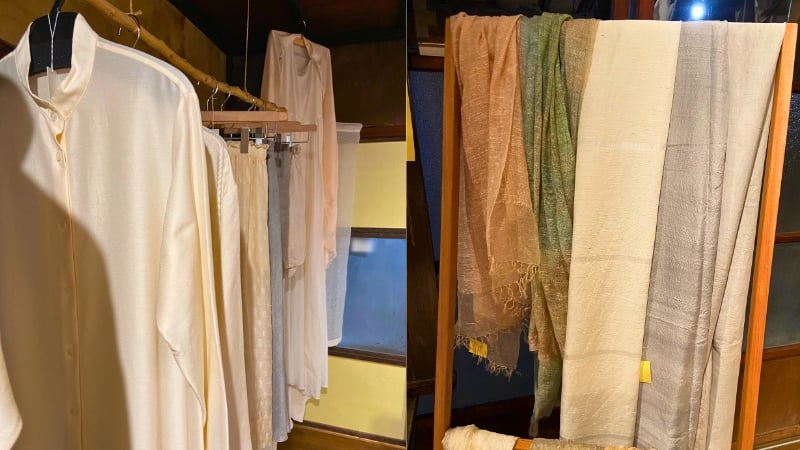
Today, Matsui Silk Weaving continues to produce a wide range of silk products, from luxurious fabrics to everyday household items. By preserving traditional techniques and embracing contemporary innovations, they are weaving together a future where the legacy of Japanese silk weaving lives on.
Day 4: Toyama Prefecture: Takaoka Mikurumayama Museum → Ariso Dome and Suwa Shrine (Tatemon Festival)
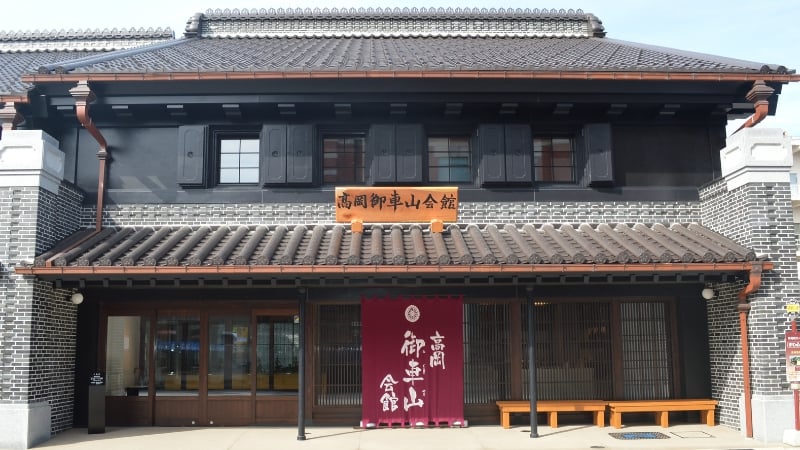
Image credit: Takaoka City
The Takaoka Mikurumayama Museum is another captivating destination where you can explore the vibrant world of matsuri in Toyama. Here, you can admire one of the seven unique Mikurumayama floats that tour the streets during the festival. These elaborate floats, with their intricate designs and vibrant colours, offer a glimpse into the region’s rich cultural heritage and artistic traditions.
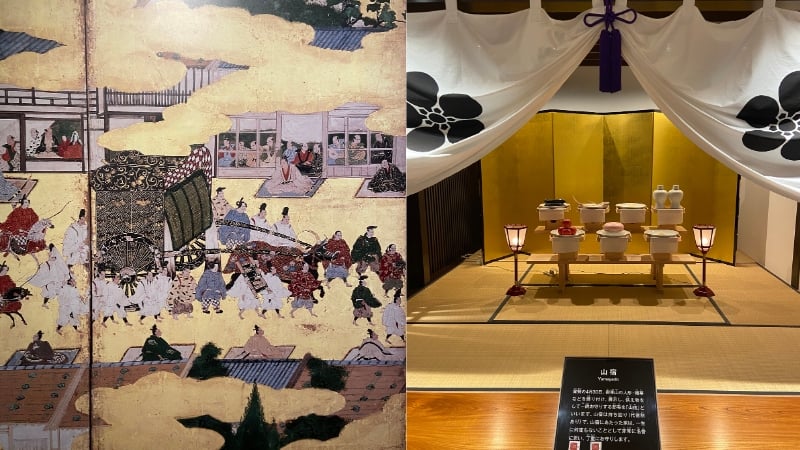
There are beautifully crafted murals and paintings to witness the history of Mikurumaya unfold before you. The history of Mikurumayama dates back to 1609, with Lord Maeda of Kanazawa bestowing the town with its first court carriage which is the origin of Mikurumayama.
The photo on the right depicts an exhibition showing a house where the dolls to be placed on the Mikurumayama floats are displayed. On the eve of the festival, offerings such as rice, salt, and sake are made, followed by a ritual to imbue the dolls with the spirit of the gods.
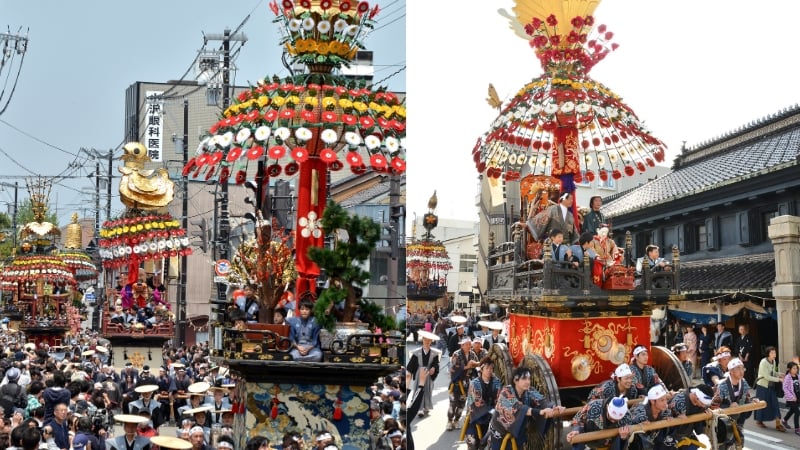
Image credit: ©︎Takaoka city Tourism Association
Similar to Johana Hikiyama floats, each Mikurumayama float is named after its home town in the city such as the Tori Machi Mikurumayama. These colossal structures weigh a whopping 2 tonnes! Unlike the Johana Hikiyama floats, the musicians perform in the body of the Mikurumayama. Also, each town has their own music that’s passed down by their ancestors.
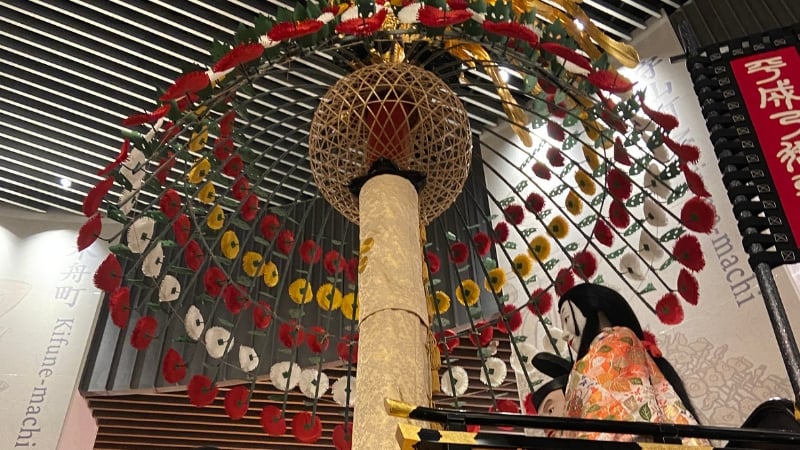
Unlike the Johana Hikiyama floats, Mikurumayama floats are topped with floral umbrellas.
There is also a basket placed under the floral umbrella, which is believed to serve as a marker for the descent of the gods during the festival.
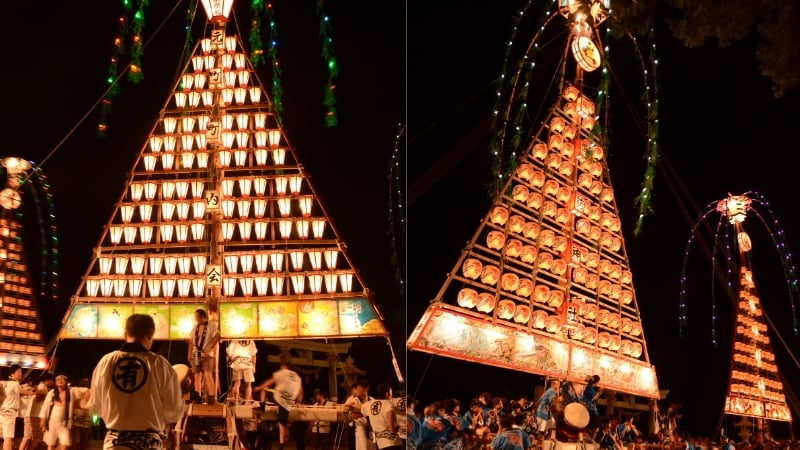
Image credit: ©︎Uozu City
Another highlight of Toyama is the Tatemon Festival in Uozu. This vibrant festival can be traced back over 300 years when it was held to pray for a bountiful catch and the safe return of fishermen. Each of the city’s seven districts constructs a towering boat-looking structure, adorned with lanterns and intricate decorations, closely resembling a “float” and contrasts the more rigid designs of the Hikiyama and Mikurumayama floats.
The meticulous process of constructing the floats, from designing the intricate lanterns to assembling the massive structure, involves the entire community!
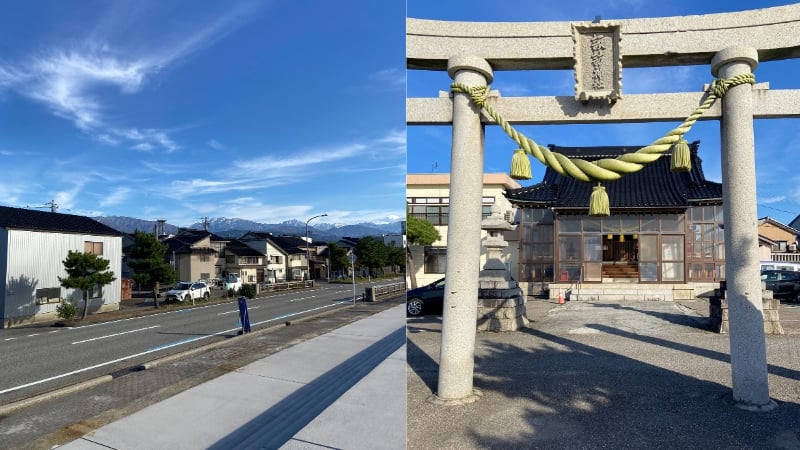
These colossal 15-metre-tall floats are pulled through the streets by around a hundred people each float until they reach the Suwa Shrine. They are assembled a week before the festival and displayed in their respective designated locations (base points) in each town until the day of the festival.
The Tatemon Festival has also made waves internationally. Around twenty-five years ago, they even took their floats to Hawaii to promote the festival to an international audience. Today, it’s a UNESCO Intangible Cultural Heritage, showcasing the rich cultural heritage of Japan.
Let’s face it, Japan holds a special place in the hearts of many Singaporeans! These traditional Japanese festivals offer a chance to dive right into the heart of Japanese culture. You don’t have to be religious to join in the fun. In fact, international visitors are encouraged to participate! Ask the local tourist office in Toyama about joining in and pulling those festive floats. It’s a hands-on way to experience Japanese traditions.
The festival culminates in the lights of the tatemon lanterns, which illuminate the night sky and are pulled around in a heroic splendour.
As our journey through Hokuriku drew to a close, I couldn’t help but feel a deep sense of gratitude for the experiences we had encountered. From the serene onsen towns to the food adventure and vibrant festivals, every moment was filled with wonder, discovery and marvel at the community spirit that binds Japanese people from all walks of life together. The warmth and hospitality of the people I met along the way left an indelible mark on my heart.
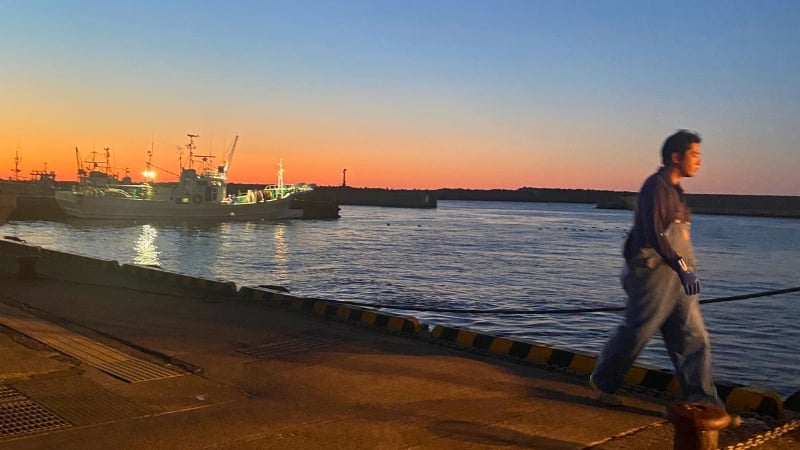
Hokuriku, with its rich history, stunning landscapes, and unique cultural traditions, offers a truly authentic Japanese experience. It’s a place where the past meets the present, and tradition blends seamlessly with modernity. Whether you’re seeking relaxation, adventure, or cultural immersion, Hokuriku has something to offer everyone.
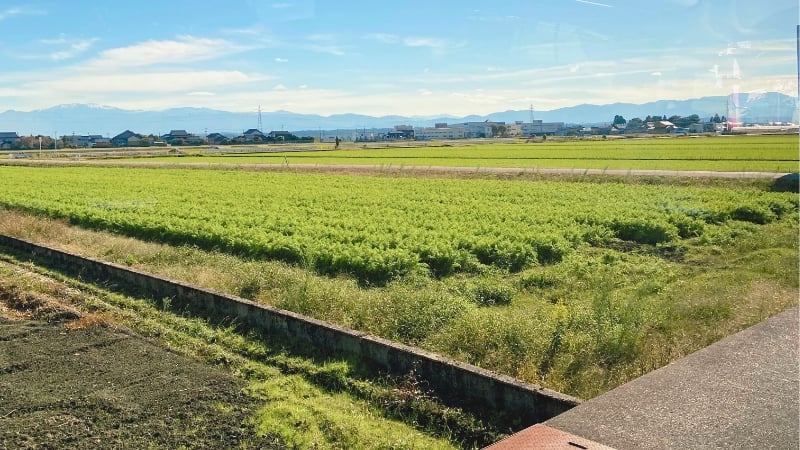
As we boarded the Shinkansen back to Tokyo, I couldn’t help but reflect on the transformative power of travel. This journey has not only broadened my horizons but also deepened my appreciation of the beauty and complexity of this world. I left Hokuriku with a heart full of gratitude and a mind full of fond memories, eager to return to this enchanting region and uncover more of its hidden beauty.
Special thanks to Japan National Tourism Organization for inviting TripZilla to the Hokuriku Press Tour. All images are credited to Preedee Teo unless otherwise stated.





